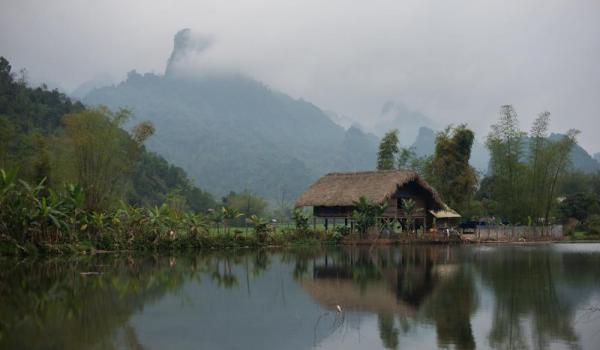Critical Ecosystem Partnership Fund (CEPF) Indo-Burma Biodiversity Hotspot
 Photo: © PRCF
Photo: © PRCF
Critical Ecosystem Partnership Fund (CEPF)
Location: The Indo-Burma Hotspot, comprising all non-marine parts of Cambodia, Lao PDR, Myanmar, Thailand, and Viet Nam, plus parts of southern China.
With its high levels of plant and animal endemism, and limited remaining natural habitat, Indo-Burma ranks among the top 10 biodiversity hotspots for irreplaceability and the top five for threat. Indo-Burma holds more people than any other hotspot, and its remaining natural ecosystems, already greatly reduced in extent, are subject to intense and growing pressure from habitat loss, degradation and fragmentation, and over-exploitation of natural resources.
Duration: 2021-2025. IUCN is leading Phase III of CEPFs investment in the Indo-Burma hotspot
Project Background: Biodiversity—the rich array of life on Earth—is fundamental to human survival, but under tremendous and growing threat. The Critical Ecosystem Partnership Fund (CEPF) was founded in 2000 to address this challenge by empowering civil society in developing countries and transitional economies to protect the world’s biodiversity hotspots, which are some of Earth's most biologically rich yet threatened terrestrial ecosystems.
CEPF's investments are especially important because the biodiversity hotspots are home to millions of people who are impoverished and highly dependent on nature for survival.
While a lot of global conservation funding is directed to governments, experience has shown that engaging with and strengthening local civil society in the developing and transitional countries of the biodiversity hotspots is critical to the long-term success of conservation.
Nongovernmental groups bring innovative ideas and practical solutions, as well as participatory approaches, to solving local challenges. This positions them to be trusted partners of government, as both seek to secure vital resources for the long-term benefit of local communities while also contributing to global conservation and sustainable development goals.
Partnership also is central to achieving biodiversity conservation. Bringing together the funding and technical expertise of CEPF donors and delivering them to organizations at the local level allows CEPF to efficiently turn those resources into grassroots conservation action where it is needed most. Meanwhile, grantees collaborate with other local organizations, governments and the private sector, contributing to the larger conservation strategies and robust civil society leadership that can truly move the dial toward a healthy future for us all.
During Phase III the total value of CEPF's conservation investment in the Indo-Burma hotspot is USD10 million. The investment is guided by a strategy known as an “Ecosystem Profile”. The ecosystem profile is an important, and unique, part of CEPF's strategy. It gives a clear picture of the current state of the hotspot and the best way forward to protecting its vulnerable biodiversity while improving the livelihoods and well-being of local communities.
The ecosystem profile also outlines CEPF's investment strategy through "strategic directions." CEPF doesn't recommend specific project concepts; rather, provides civil society groups with grants to develop these themselves. These projects, though, must meet at least one of the strategic directions set out in the profile. Through these strategic directions, it is ensured that the limited CEPF funding is going to areas of the hotspot that need it most.
Strategic Directions (Phase III):
CEPF invesment during Phase III is focused on six strategic directions. These are;
- Safeguard priority globally threatened species by mitigating major threats;
- Mitigate zoonotic disease risks by reducing illegal trade and consumption of and threats to wildlife;
- Empower local communities to engage in conservation and management of priority sites;
- Demonstrate scalable approaches for integrating biodiversity and ecosystem services into development planning in the priority corridors;
- Strengthen the capacity of civil society to work on biodiversity, communities and livelihoods at regional, national, local and grassroots levels;
- Provide strategic leadership and effective coordination of conservation investment through a regional implementation team.
Donors: CEPF is a multi-donor fund designed to help safeguard the world's biodiversity hotspots. It is a joint initiative of l’Agence Française de Développement, Conservation International, the European Union, the Global Environment Facility, the Government of Japan, and the World Bank. In the Indo-Burma Hotspot, it is also supported by the Margaret A. Cargill Philanthropies.
For more information, please visit the CEPF website.
 Photo: © IUCN
Photo: © IUCN
